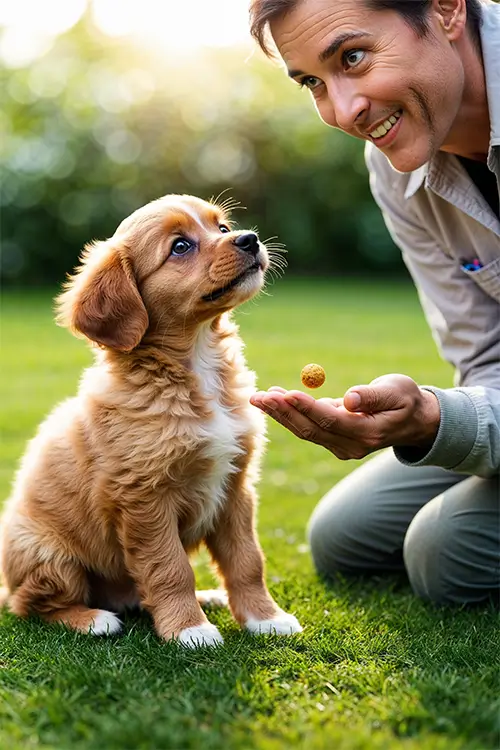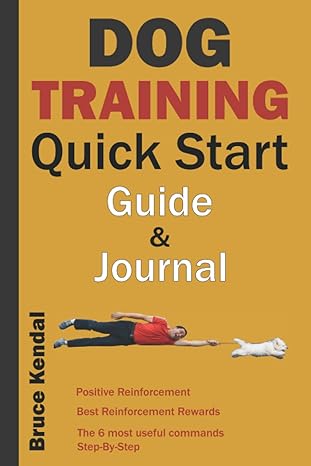Teaching your puppy to come when called is one of the most crucial skills in dog training. This command, often referred to as “recall,” can keep your furry friend safe and allow for greater freedom during walks and playtime. By using positive reinforcement with small treats, you can make the learning process enjoyable and effective for your puppy. Let’s dive into a comprehensive guide on how to train your puppy to come when called using only positive rewards.
Understanding the Importance of Recall
Before we delve into the training process, it’s essential to understand why a strong recall is so important for your puppy:
- Safety: A reliable recall can prevent your puppy from running into dangerous situations, such as busy roads or encounters with aggressive animals.
- Freedom: When your puppy responds consistently to your call, you can allow them more off-leash time in safe areas.
- Bonding: The process of training recall strengthens the bond between you and your puppy, as it builds trust and positive associations.
- Legal requirements: In many areas, dogs must be under control in public spaces, which often means responding to their owner’s commands.
Choosing the Right Treats
The foundation of positive reward training is selecting the right treats. Here are some tips for choosing effective training treats:
Small and soft: Choose treats that are small enough for your puppy to eat quickly and soft enough to be easily chewed. This allows for rapid reward delivery without interrupting the training flow.
High-value: Use treats that your puppy finds particularly enticing. These could be small pieces of cooked chicken, cheese, or commercial training treats with a strong aroma.
Variety: Keep a selection of different treats to maintain your puppy’s interest. You can even use your puppy’s regular kibble for some training sessions, saving the high-value treats for more challenging environments or distractions.
Health considerations: Ensure the treats you choose are appropriate for your puppy’s age and any dietary restrictions they may have. Always consult with your veterinarian if you’re unsure.
Setting Up for Success
The foundation of positive reward training is selecting the right treats. Here are some tips for choosing effective training treats:
Small and soft: Choose treats that are small enough for your puppy to eat quickly and soft enough to be easily chewed. This allows for rapid reward delivery without interrupting the training flow.
High-value: Use treats that your puppy finds particularly enticing. These could be small pieces of cooked chicken, cheese, or commercial training treats with a strong aroma.
Variety: Keep a selection of different treats to maintain your puppy’s interest. You can even use your puppy’s regular kibble for some training sessions, saving the high-value treats for more challenging environments or distractions.
Health considerations: Ensure the treats you choose are appropriate for your puppy’s age and any dietary restrictions they may have. Always consult with your veterinarian if you’re unsure.
Setting Up for Success
Before you begin formal recall training, create an environment that sets your puppy up for success:
Start indoors: Begin training in a quiet, familiar indoor space with minimal distractions. This allows your puppy to focus on you and the new command.
Use a long leash: When moving outdoors, use a long training leash to ensure safety while allowing your puppy some freedom to explore.
Choose a distinct recall word: Select a specific word or short phrase for your recall command. Common choices include “come,” “here,” or your puppy’s name followed by “come.”
Timing is everything: Train when your puppy is alert but not overly excited. Short, frequent sessions are more effective than long, infrequent ones.
The Training Process
Now that you’ve set the stage for success, let’s walk through the step-by-step process of training your puppy to come when called:
1. Creating Positive Associations
Begin by associating your chosen recall word with positive experiences:
- Say your puppy’s name followed by the recall word in a cheerful tone.
- Immediately offer a treat when your puppy looks at you or moves towards you.
- Repeat this process several times throughout the day, in different locations around your home.
This step teaches your puppy that responding to the recall word results in a pleasant reward.
2. Adding Movement
Once your puppy consistently responds to their name and the recall word, introduce movement:
- Allow your puppy to wander a short distance away from you in a safe, enclosed area.
- Call your puppy using their name and the recall word.
- When they start moving towards you, encourage them enthusiastically.
- Reward them with a treat and praise as soon as they reach you.
Gradually increase the distance between you and your puppy as they become more reliable in their response.
3. Introducing Distractions
As your puppy becomes more proficient, slowly introduce mild distractions:
- Practice recall in different rooms of your house.
- Move to a quiet outdoor area, using a long leash for safety.
- Call your puppy when they’re mildly distracted, such as sniffing the ground.
- Reward generously when they respond, especially in the presence of distractions.
Remember to increase the level of distraction gradually to avoid overwhelming your puppy.
4. Varying Rewards
To keep your puppy engaged and responsive, vary the rewards you offer:
- Use a mix of different treats.
- Occasionally replace food rewards with enthusiastic praise, petting, or a favorite toy.
- Implement a variable reward schedule, sometimes offering a single treat, other times offering a “jackpot” of several treats for an especially quick response.
This variability keeps your puppy interested and eager to respond, as they never know what exciting reward awaits them.
5. Proofing the Behavior
Proofing involves practicing the recall command in various situations to ensure reliability:
- Practice in different locations, both indoors and outdoors.
- Call your puppy at different times of day and during various activities.
- Gradually increase the level of distraction in the environment.
- Have family members or friends call your puppy to ensure they respond to others as well.
Remember to always set your puppy up for success by not making tasks too difficult too quickly.
Common Challenges and Solutions
Even with positive reinforcement, you may encounter some challenges. Here are some common issues and how to address them…
Puppy doesn’t come: If your puppy doesn’t respond, avoid repeating the command multiple times. Instead, make yourself more interesting by using an excited voice, clapping, or moving away from your puppy. Never punish your puppy for not coming; this can create negative associations with the recall command.
Puppy comes slowly: For a slow response, still reward your puppy when they reach you, but keep the reward low-key. Save your most enthusiastic praise and best treats for quick responses.
Distractions are too tempting: If your puppy is consistently distracted, take a step back in your training. Reduce the level of distraction and work on building a stronger foundation before progressing.
Random rewards: Occasionally call your puppy, reward them with praise, and then release them to go back to what they were doing. This teaches them that coming to you doesn’t always mean the end of fun.
Hide and seek: Have a family member hold your puppy while you hide, then call them. This game makes recall fun and exciting for your puppy.
Recall relay: With multiple family members, take turns calling the puppy back and forth, rewarding each successful recall. This reinforces that the puppy should come to anyone who calls, not just their primary trainer.
Maintaining the Behavior
Once your puppy has a strong recall, it’s important to maintain this behavior. Here are some fun ideas.
- Continue to practice regularly, even if just a few times a week.
- Always reward your puppy for coming when called, even if it’s just with praise or a quick pet.
- Never punish your puppy after they come to you, even if they’ve done something wrong. This ensures that coming to you is always a positive experience.
- Periodically “refresh” the training with short, focused sessions, especially if you notice any decline in responsiveness.
Conclusion
Training your puppy to come when called using positive reinforcement with treats is a rewarding process that strengthens your bond and ensures your puppy’s safety. Remember that consistency, patience, and making the training process fun are key to success. Every puppy learns at their own pace, so celebrate small victories and don’t get discouraged if progress seems slow at times. By following this guide and adapting it to your puppy’s individual needs and personality, you’ll be well on your way to having a dog with a reliable recall. This invaluable skill will provide you and your furry companion with years of safe, enjoyable adventures together.
Consider getting professional help training your dog with online dog training classes.
Additional Resources
For a much more thorough and complete video course in training your puppy see our, Doggy Dan Online Dog Trainer Review. This is a course you can use even in the field with your mobile phone.
See our, Doggy Dan Online Dog Trainer.
See our, Sit Means Sit Review.
Visit the ASPCA website.





